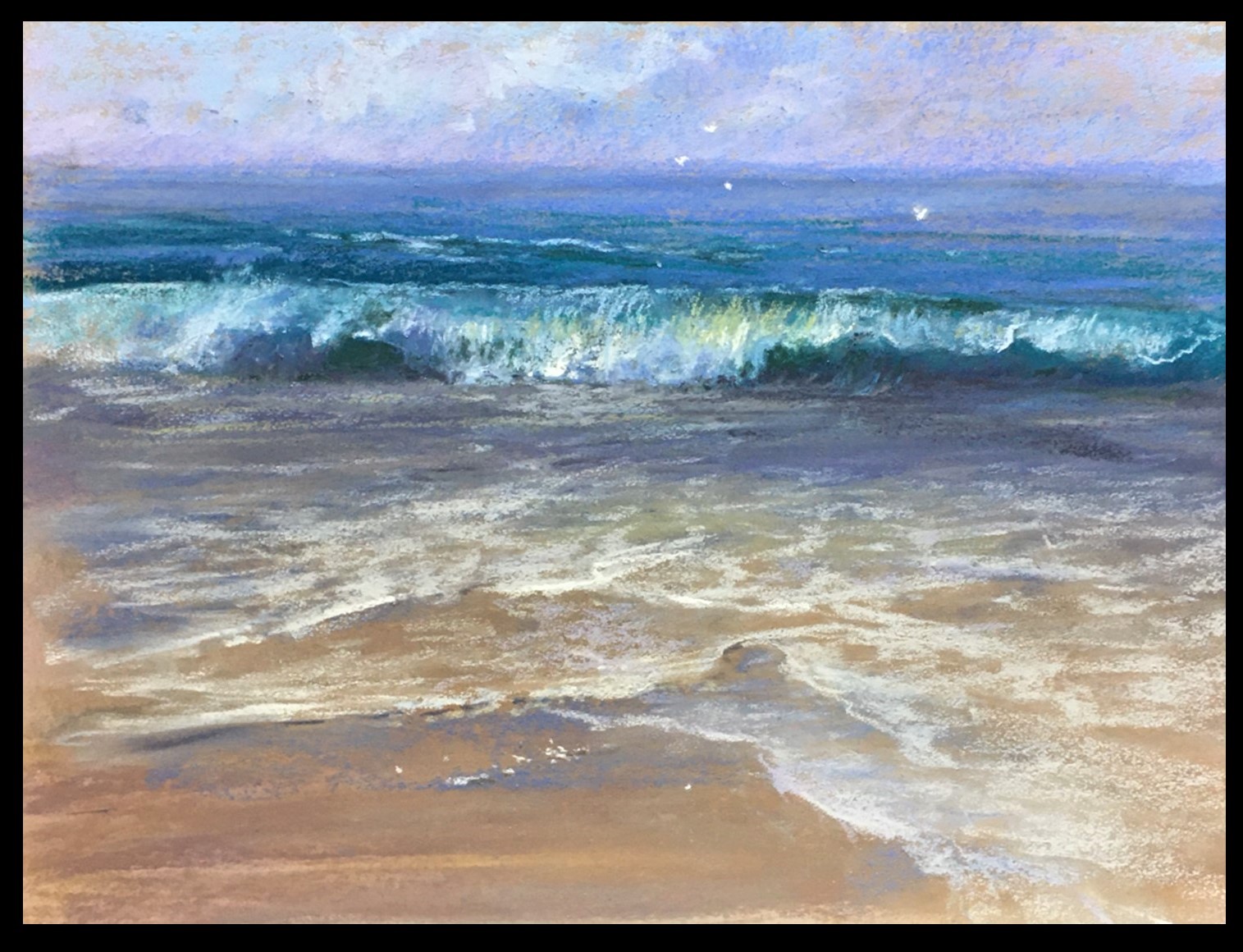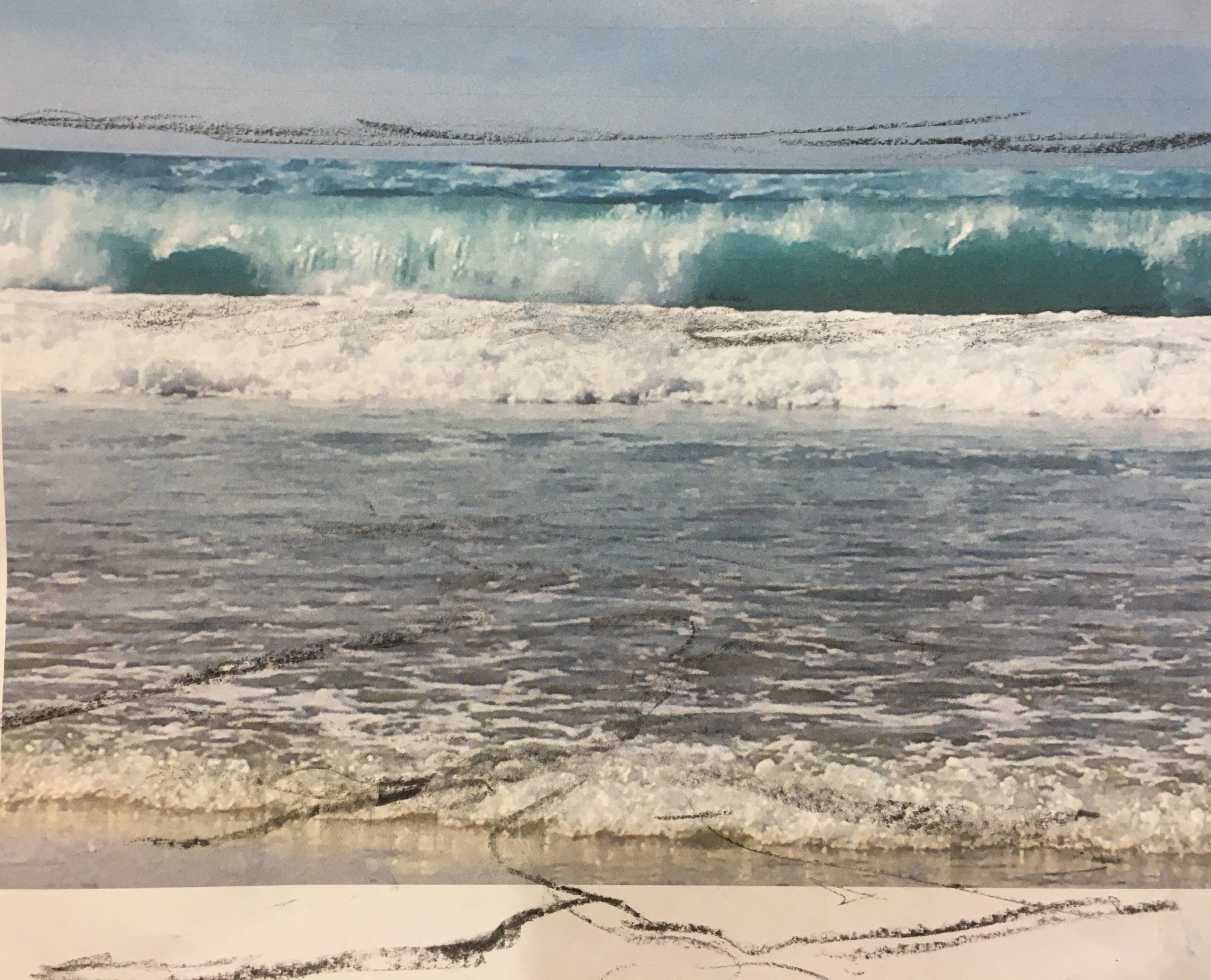

The Long Rollover Wave- with different energies in the shallow wave flows.
Part 1 and 2 within this video covers Drawing the subject and preparing the colour base.
Waves have their own personality and it is a visual body of energy formed by the elements, a shape that won't wait until we draw it and movement that it based on the elements that formed it and finally break it.
Sometimes it is good to stabilize the stronger colours, especially the darker tones with an alcohol wash (this can be done with water but takes longer to dry). If they are 'fixed' this way to the surface we can apply thinner layers on top and work on the flow and texture with variable intensity to our lines and edges to increase or decrease the strength of the shape, feeling of movement and allow the light against shadows to highlight form as well as the surface textures.
The body of the wave has been established and we can move our attention to the water in the shallows. We consider most importantly the slope of the land (sand) on the shoreline. If it is a steep angle the wave will have broken with most definition or force where it initially met first resistance from the shore. The water in the wave then pushes forward and goes up the slope, losing energy as it goes. It will then stall and be dragged back to the deeper water.
Inconsistencies in the ground surface can alter the flow and create interesting movements.
If the land is flat or shallow the broken energy of the wave can flow further before running out of energy, stalling then flowing back. Interesting mini flow patterns emerge as the waves either move forward together or retreating waves create their own resistance as the go against the incoming flows.
Study these when you visit the beaches. there is much to observe, and many possibilities to add to the basic wave that first took your eye.